Standard temple lengths from glasses range from 135mm up to 155mm. In most cases, shorter temples are not available with most glasses frames. In this article, you will learn how to shorten the temples.
In preparation to shorten the temples, you need a side cutter or a knife and a fine rasp in combination with sandpaper. When temple tips mounted on the end of the temple they should be pulled off the metal inlay before shortening it with a side cutter. With a rasp, sharp edges can be smoothed before the temple tip is placed back on the metal inlay. In this case, the temple has the same look but it is a little shorter. This changes with plastic frames oftentimes.
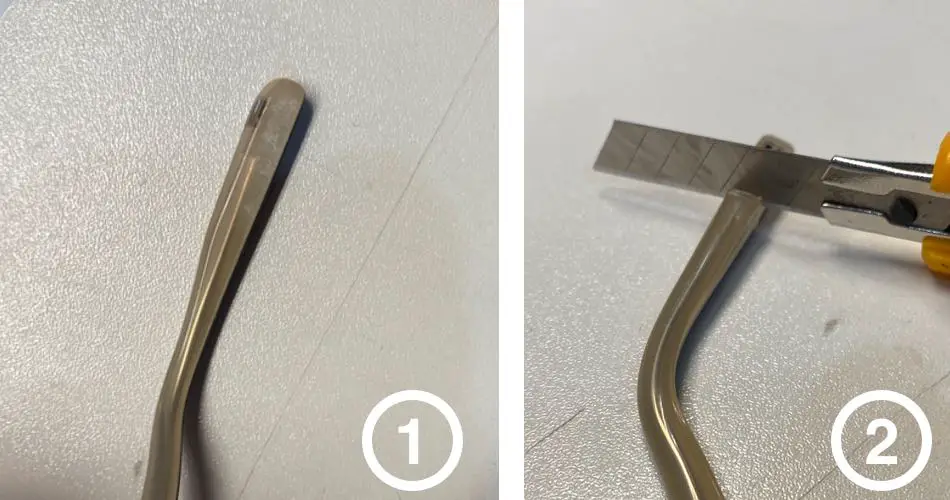
With most cases plastic frames you will not have removable temple tips. So the plastic material needs to be cut with a utility knife. A knife does not push the plastic temple in a changed shape. The cutter shortens the plastic part effectively. When the plastic part then gets removed a side cutter can be used to cut the metal found in the middle of the temple. Afterward the rasp again and the sandpaper should be used to smooth the end of the temple.
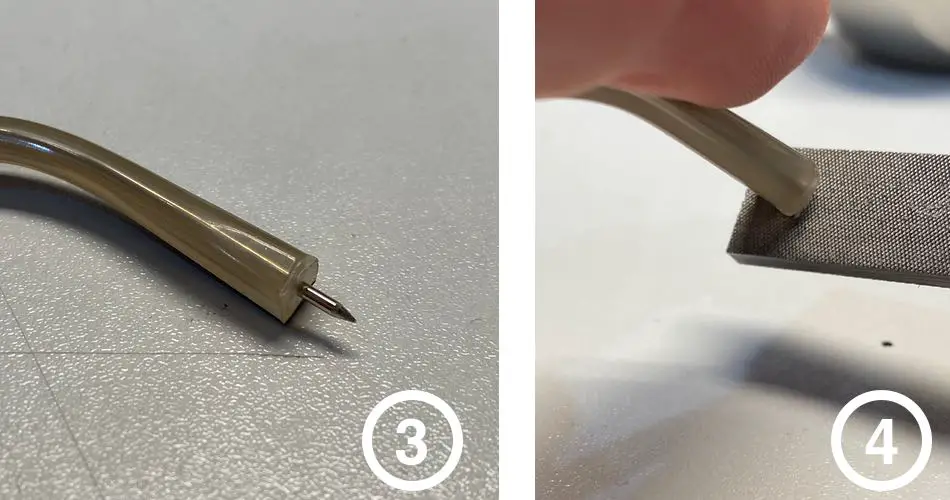
Depending on the design of the rest of the glasses it could look great to polish the temple or leave it matte. After a plastic temple was shortened usually a silver dot is visible on the end of the temple. Most plastic frames made out of cellulose acetate look like this. If you do not like the silver dot at the end of your temple you should not attempt to shorten the temple.
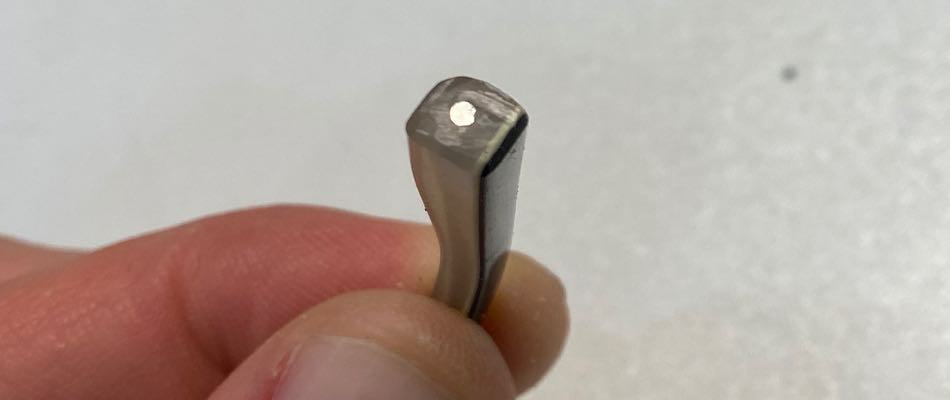
Tutorial: How to Shorten Temples on a Metal Frame
Here in the picture picture below you can see the steps how the temple gets shortened. In order to do so it is better to slide the temple tip down the metal so you can take it off. Before you bend the temple straight with the temple tip it is recommended to warm the plastic up a little. This way the plastic in the end of the temple gets more flexible and less prone to breaking. A temperature around 140°F(60°C) is optimal therefore. You can use a dryer to do this.
Be careful to not heat it up too much in a single spot. Because this way the plastic could show blisters. Warming the temple tip for approximately 30 seconds in enough to pull it straight bend it and slide it down the temple.
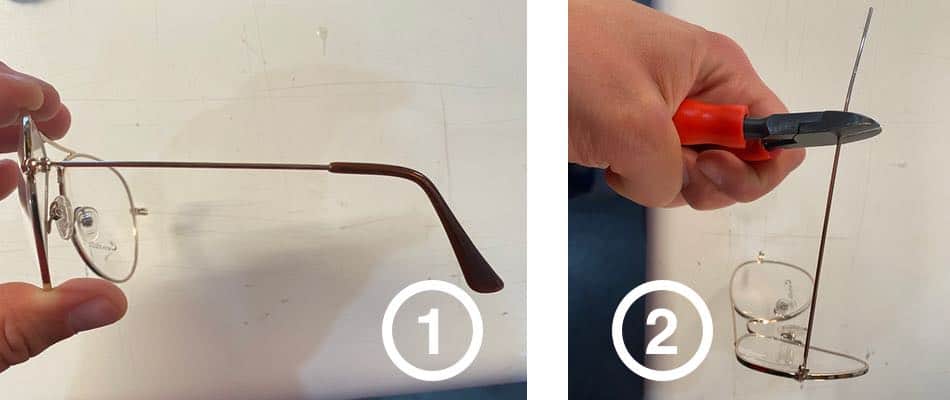
After you removed the plastic you can shorten the temple with a side cutter. After using the side cutter it is recommended to use a rasp and sandpaper to smoothen the edges of the end of the temple. When the temple feels smooth again in the end you can place the temple tip back again on the temple. And voila. As you can see in step four in the image below the temple is significantly shorter.
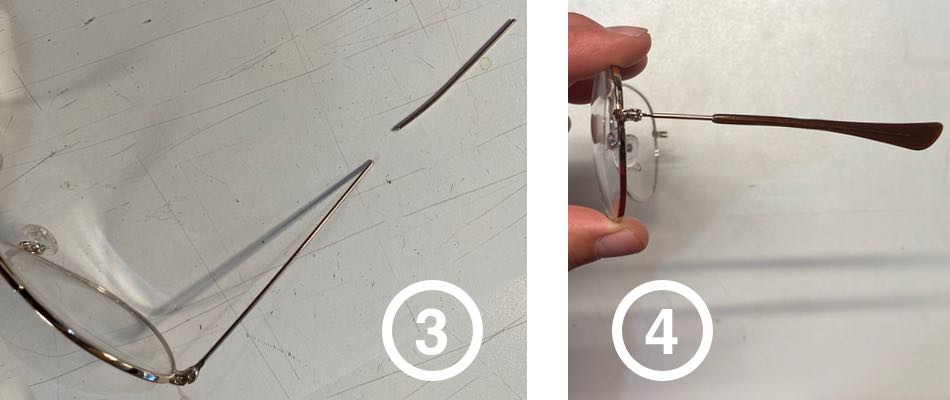
As this process requires only a few minutes of your time it is recommended to not shorten the temple too much. In case when you are unsure cut the temple less and still have a little length to shorten it a second time. When the temple is too short usually the temple tip does not have enough metal inlay in it and the plastic comes off easily.
How Long Should the Temples Be?
The length of the temple tip is important when it comes to a comfortable fit. In general, 30 to 40mm of temple length should remain after bending to ensure a perfect fit. The temple tip should be bent immediately after the base of the ear. If it is bent too early, there will be a tensile load on the ear.
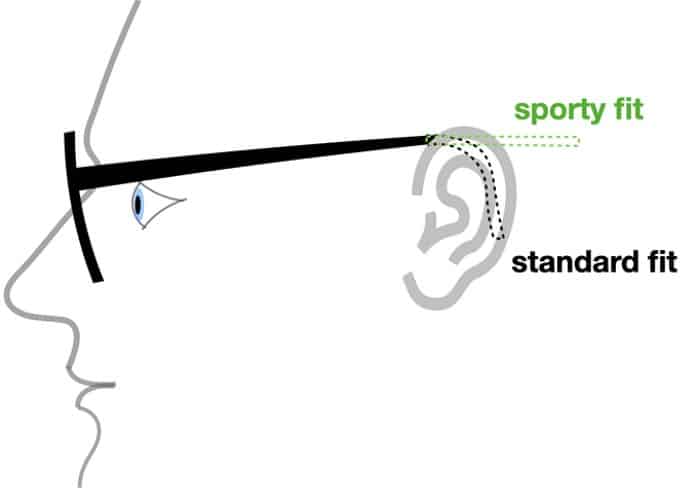
Usually, when the design of the frame looks rather sporty and the temples have no or minimal bent the temples should be a little longer because the glasses hold mostly by the temples wrapping your head. When they are too short the glasses will slide down your nose.
In the picture above you can see the more sportive looks will require longer temples compared to the regular anatomical adjustment. With a bent temple behind your base part of the ear, the temple tip should not be visible from the side. When the ear is very small this in some cases can not be achieved. But with most ears this is easily achievable.
When the temples are too long it is usually not a problem to shorten them. But when you try them on at first and you think if they are a little more on the shorter side you should not buy the frame because usually, you can not make the temple longer. In some cases, the optician could pull out the temple tip a little to make the temple slightly longer but this only makes it longer for about 5mm. Everything longer than that will make the temple tip more prone to breaking or slipping down from the metal part of the temple.
Can You Replace Temples on Glasses?
When you are not satisfied with the length of the temples or with the style it is possible to ask your optician if replacement temples are available for the particular frame. However, with most glasses, you have just one temple option. And this is the one mounted on the frames when you try the frames on in the optical shop.
The hinges of the temples oftentimes limit the possibility to replace a temple. Because a lot of manufacturers have differently sized hinges. Some have bigger, more, or fewer roles on the hinges. This may make the mid part of the frame not compatible with the replacement temples. So in most cases, it is not recommended to switch the temples from another pair of glasses to your glasses.
I wish you a great day.
